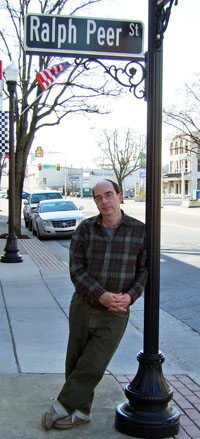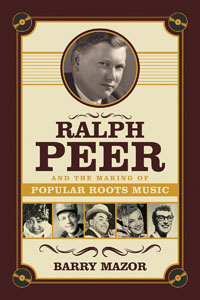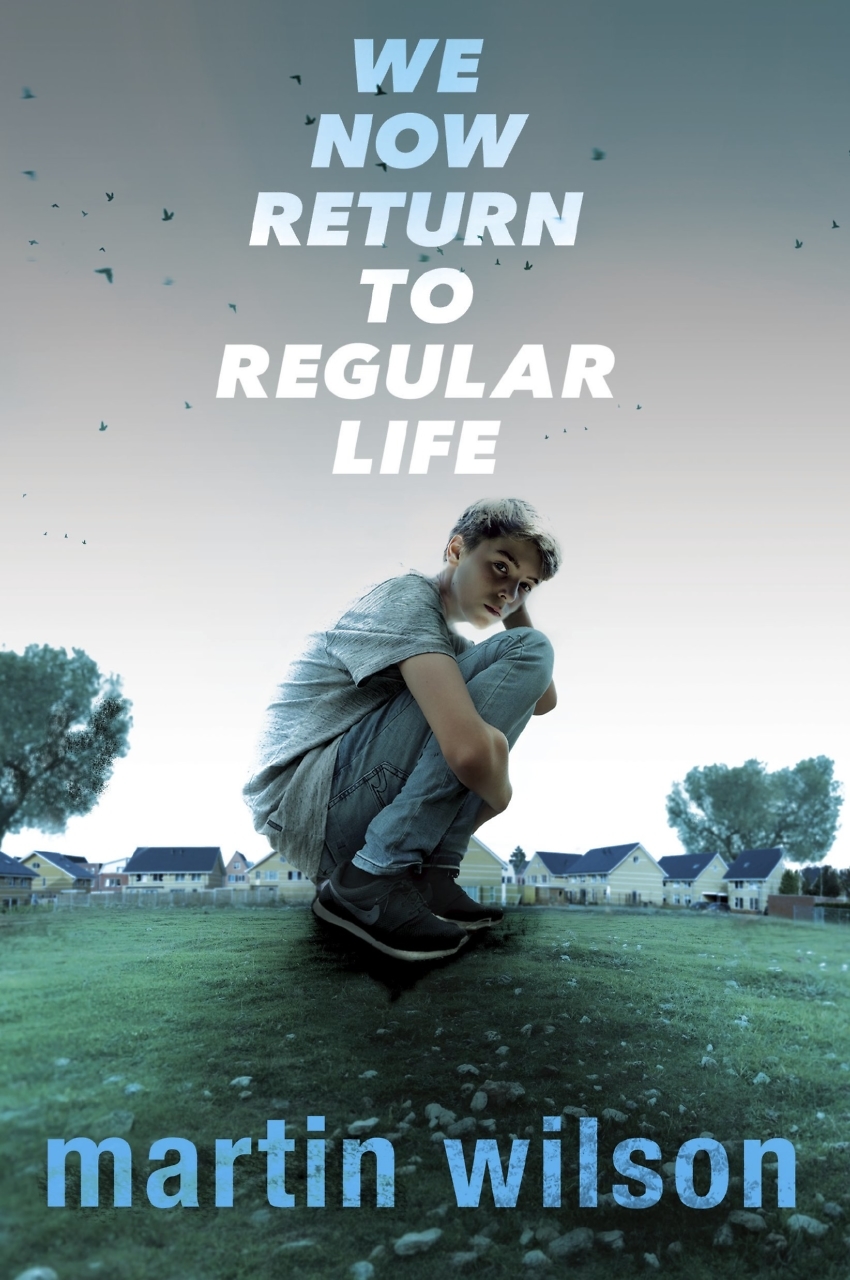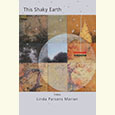Priceless Peer
In a new biography of Ralph Peer, Barry Mazor untangles the roots of American roots music
Barry Mazor’s Ralph Peer and the Making of Popular Roots Music traces the life and career of Ralph Peer, who rose from Kansas City phonograph salesman to one of history’s most influential A&R scouts, record producers, and music publishers. At the beginning of the biography, it’s hard to imagine how this working-class kid with a cherubic face and more interest in science than in music could possibly affect the evolution of American music as we know it. By the end, it’s hard to imagine the history of recorded music—and country music in particular—without him.
 Just perusing the list of performers Peer was involved with, as either producer or publisher, is enough to boggle the mind: Louis Armstrong, Jelly Roll Morton, Emmett Miller, Sara Martin & Sylvester Weaver, the Carter Family, Jimmie Rodgers, Hoagy Carmichael, and Blind Willie McTell to name a scarce few. The names are listed in a useful appendix, but the real magic is in seeing these many dots connected.
Just perusing the list of performers Peer was involved with, as either producer or publisher, is enough to boggle the mind: Louis Armstrong, Jelly Roll Morton, Emmett Miller, Sara Martin & Sylvester Weaver, the Carter Family, Jimmie Rodgers, Hoagy Carmichael, and Blind Willie McTell to name a scarce few. The names are listed in a useful appendix, but the real magic is in seeing these many dots connected.
Mazor, Nashville music journalist and author of Meeting Jimmie Rodgers, brings the reader along to the recording of the very first African-American blues record, the creation of the Brill Building, the development of the stateside samba craze of the 1940s, the formation of the Country Music Association, and beyond, all with an impressive command of the many overlapping narratives and a dry wit to match. There are frantic location recordings, altercations, divorces, lawyers sent roaming the country in search of the origins of “Home on the Range,” and at least one incident in which Russian police seize sheet music because they suspect it contains coded messages—with Peer always at the center of it all somehow.
If Jimmie Rodgers is the father of country music, then Peer—who recorded his first sessions, managed him as much as Rodgers could be managed, and oversaw the revival of his legacy decades after his death—can be thought of as its midwife. The “Big Bang of country music,” when both Rodgers and the Carter Family recorded for Peer in Bristol, would be accomplishment enough for most, but that event constitutes just one part of one chapter in this information-stuffed biography— one in which Mazor demonstrates his skill in managing multiple, sometimes conflicting, accounts of what happened.
 Peer recognized early in his career that regional music, modernized and performed the right way, had an audience. But that’s not the only way in which he was ahead of his time. Consider this passage from the book:
Peer recognized early in his career that regional music, modernized and performed the right way, had an audience. But that’s not the only way in which he was ahead of his time. Consider this passage from the book:
Most famously and strikingly, performers he was recording for race records would show up, credited or uncredited, on recordings by hillbilly artists recording in the same sessions. Guitarists Ed Schaffer and Oscar Woods, the Shreveport Home Wreckers, backed Jimmie Davis on multiple records at sessions in Memphis and Dallas during which the Wreckers were also recorded. Blues guitarist and singer Clifford Gibson and the Louisville Jug Band featuring Clifford Hayes (who’d recorded for Peer at Okeh) both backed Jimmie Rodgers during his 1931 Louisville sessions—at which Peer was also recording those acts themselves. And he’d use virtually the same arrangement and musicians on “Please Don’t Holler, Mama” with bluesman Ben Ferguson as he used with Rodgers and the jug band on “My Good Gal’s Gone Blues.”
Even so, Mazor is careful to place Peer’s progressive attitude in context: “This is not at all to suggest that Ralph Peer was any sort of political or social activist concerning racial integration in music. Such activism was not his style,” Mazor writes. “But presented with situations where it looked like the music and combination of players would work, he said yes, and openly so.” Further, he doesn’t let Peer slide when his attitudes are more reflective of his time, or even a little behind it. Referring to a conversation in which Peer describes Jimmie Rodgers as playing the “nigger blues,” Mazor writes: “There he goes, in 1959, using the repugnant n word again, interchangeably in that conversation with ‘Negro,’ the generally accepted term of the time.”
There are times when Mazor’s prose is almost impossibly dense with references to singers, songwriters, and song titles. But as the book goes on, the cumulative effect of all those interconnected histories becomes its own reward. At other times, Mazor inverts this mode of presentation by using a single song as a way of showing not only Peer’s influence but the tangle of intersecting histories, legal claims, and collective memories that muddle notions of a song as a single, stable entity. “Home on the Range” serves as one such example, as Mazor carefully lays out the story of the song and its various copyright claims. Peer made a career out of getting artists to write the definitive, copyrightable version of a song that had floated around campfires and living rooms for countless years, and Mazor does an excellent job of parsing that process, along with seemingly ho-hum music-business basics like mechanical royalties.
One thread running through Ralph Peer and the Making of Popular Roots Music is the idea that Peer was constantly adapting to the changing technology of his time—first phonograph records, then radio, then juke boxes—in ways that echo the churn and disruption of the contemporary music business. This discussion extends right down to the increasing importance of placing songs in movies, which is how Walt Disney, who grew up a few blocks over from Peer in Kansas City, though they never met as youngsters, joins the story.
Throughout the book, Mazor draws convincing parallels between Peer’s time and ours. Just last week, recording engineer Steve Albini told the audience at the Face the Music conference in Melbourne, Australia, that the record business Peer grew up in and helped create is gone. “There is still an independent label network but it’s a slim fraction of what it was,” Albini said. “The labels continuing to survive do so by supplying niche music to a discerning audience.” Which is exactly how Ralph Peer got his own start.
How he took it from there is a thrill to read, and wonderfully told.

Steve Haruch lives in Nashville. He has written about culture and music for NPR’s Code Switch, The Guardian, and the Nashville Scene, where is he is a contributing editor.


